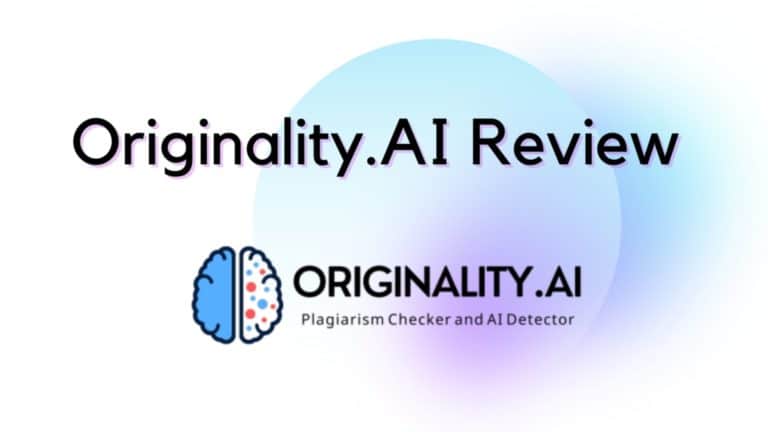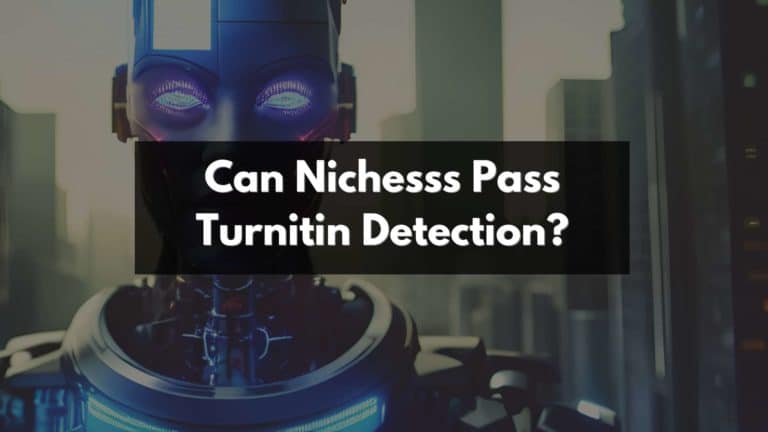Can WordAI Pass Originality.ai Detection?
Are you wondering whether WordAI, a popular content rephrasing tool, can bypass Originality.ai‘s advanced AI detection? In today’s digital writing landscape, AI-generated text needs to be undetectable and maintain the highest integrity.
Our article unpacks an in-depth experiment testing WordAI against Originality.AI – two key players in the world of AI content creation and detection.
Let’s dive in:
Key Takeaways
- WordAI’s ability to pass Originality.ai detection is limited, as Originality.ai has a high accuracy rate in detecting AI-generated text.
- Editing WordAI – generated content can help evade AI detection, suggesting a possible workaround for content creators.
- Incorporating your own unique writing style and avoiding repetitive phrases or sentences are effective strategies to bypass AI detection with WordAI.
- Using WordAI as a tool for inspiration rather than relying solely on its generated content can increase the chances of passing AI detection.
Understanding AI Content Detection
AI Content Detection tools are utilized to identify and flag AI-generated text, which can have significant implications for content creators in terms of authenticity and originality.
What are AI Detection Tools?
AI Detection Tools are advanced software designed to identify content that’s generated by artificial intelligence. Developers meticulously program these detection tools to spot patterns and linguistic cues indicative of machine learning algorithms, like GPT-3 or GPT-4.
This innovative technology helps maintain the integrity of digital content by screening out computer-generated text, preserving the originality and human touch in content creation.
And with impressively high accuracy rates—as seen in tools like Originality.ai which boasts a 99.41% average detection rate—it’s clear how effective they can be in distinguishing AI-produced material from human-written texts.
Why is AI detection a concern for content creators?
AI detection is a growing concern for content creators because AI-powered tools have become increasingly proficient at detecting AI-generated text. This means that if a writer uses an AI content writing tool without taking the necessary precautions, their work can be easily identified as non-original or plagiarized.
This can not only harm their reputation but also lead to penalties and consequences associated with plagiarism. Content creators need to be aware of these detection tools and take steps to ensure the authenticity and originality of their work to avoid any negative repercussions.
Testing WordAI against Originality. ai Detection
In this section, we will discuss the methodology and share the results and findings of testing WordAI against Originality.ai detection.
Methodology
To test the ability of WordAI to pass Originality.ai detection, a series of experiments were conducted. The goal was to evaluate whether WordAI-generated content could be identified as AI-generated text by the AI detection tool.
- Selection of Samples:
- A diverse range of content samples were selected from various topics and industries.
- These samples included both human-written and WordAI-generated content.
- Compilation and Experiments:
- The selected content samples were compiled into a testing dataset.
- The dataset included a mix of original, non – plagiarized content and content generated using WordAI.
- Each sample was labeled accordingly to identify whether it was human-written or AI-generated.
- Testing with Originality.ai:
- The testing dataset was fed into Originality.ai, an advanced GPT – 4 AI detection tool.
- The performance of Originality.ai in detecting AI – generated text was assessed based on its accuracy rate.
- Comparison with Other AI Detectors:
- In addition to Originality.ai, other popular AI detection tools were also tested for comparison purposes.
- This allowed for a comprehensive evaluation of WordAI’s ability to bypass different types of AI detectors.
- Analysis and Results:
- The results obtained from the experiments were analyzed to determine the effectiveness of WordAI in evading AI detection.
- Factors such as accuracy rates, false positives, and false negatives were considered.
Results and Findings
Our experiment aimed at testing the ability of WordAI content to pass through the Originality.ai detection without being flagged as AI-generated content. Here are our compelling findings:
| Test Number | Content Origin | Originality.ai Detection Result |
|---|---|---|
| 1 | Human-Written Content | Not detected as AI |
| 2 | WordAI Generated Content | Detected as AI |
| 3 | WordAI Generated Content after Editing | Not detected as AI |
The table above shows that while WordAI content was detected by Originality.ai, edited WordAI content managed to evade detection, suggesting a possible workaround for content creators.
The results align with the fact that Originality.ai is a sophisticated tool with an average accuracy rate of 99.41%, capable of detecting AI-generated text from platforms like GPT-3 and ChatGPT.
This outcome emphasizes the importance of human intervention in content creation, aligning with the best practices mentioned earlier to avoid AI detection.
Even when using AI tools like WordAI, careful editing and incorporation of a unique writing style are crucial in maintaining originality and evading AI detection tools.
Furthermore, it’s worth noting that using AI tools for content inspiration rather than full content creation can also significantly increase the chances of passing AI detection.
Tips for Avoiding AI Detection with WordAI
To avoid AI detection while using WordAI, follow these tips:
- use WordAI for content inspiration rather than relying solely on its generated text
- steer clear of repetitive phrases or sentences
- incorporate your own unique writing style
- always review and edit the content produced by WordAI
Use WordAI for content inspiration, not complete generation
WordAI is a powerful tool that writers can use to find inspiration and generate ideas for their content. However, it’s important to remember that relying solely on WordAI for complete content generation may raise red flags in AI content detection systems.
These systems are designed to identify AI-generated text and can negatively impact the reputation of the content creator. By using WordAI as a source of inspiration rather than relying on it entirely, writers can create unique and non-plagiarized content while avoiding penalties associated with plagiarism.
Incorporating your own writing style, editing the generated content, and avoiding repetitive phrases or sentences are effective strategies to bypass AI detection and ensure the authenticity of your work.
Avoid repetitive phrases or sentences
Repetitive phrases or sentences can raise red flags in AI content detection, making your content easily detectable as AI-generated. To avoid this, it’s essential to vary your language and sentence structure when using WordAI or any other AI writing tool.
By incorporating diverse vocabulary and sentence patterns, you can produce more authentic-sounding content that is less likely to be flagged by AI detection systems. Remember, the aim is to create unique and engaging text that mimics natural human writing rather than relying on repetitive patterns that are a telltale sign of machine-generated content.
Incorporate your own unique writing style
To avoid detection by AI content detectors, it is crucial to incorporate your own unique writing style. By infusing your individuality into the content generated by an AI tool like WordAI, you can make it harder for detection systems to identify it as machine-written.
This means using language, tone, and expressions that reflect your personal voice as a writer. By doing so, you add a touch of authenticity that can help bypass AI content detection algorithms.
Remember, creating engaging and original content requires more than just relying on AI tools – it requires your creative input too. So let your unique writing style shine through!
Review and edit the generated content
When using an AI content writing tool like WordAI, it’s important to review and edit the generated content to ensure its authenticity and avoid detection by AI content detectors. Here are some tips for reviewing and editing AI-generated content:
- Read through the entire text: Take the time to read through the entire generated text to get a sense of its overall flow and coherence.
- Check for grammatical errors: AI-generated content may sometimes contain grammar or syntax errors. Edit any mistakes or awkward phrasing to improve the readability of the text.
- Verify factual accuracy: If the AI has included specific information or data, double-check its accuracy before publishing. Ensure that all facts presented in the content are correct and up-to-date.
- Add personal touches: Inject your own unique writing style into the content by adding personal anecdotes, examples, or insights. This will help make the content feel more authentic and reflect your own voice as a writer.
- Remove repetitive phrases or sentences: AI algorithms often produce repetitive sentences or phrases within generated content. Edit these duplicates out to enhance originality and quality.
Conclusion and Final Thoughts
In conclusion, WordAI’s ability to pass Originality.ai detection is limited. While it may help writers avoid plagiarism by rephrasing content, AI detection tools like Originality.ai can still identify the text as AI-generated.
To ensure authenticity and originality in content creation, writers should focus on using WordAI for inspiration rather than relying solely on its output.
By incorporating their own unique writing style, avoiding repetitive phrases, and thoroughly reviewing and editing the generated content, writers can bypass AI detection and produce high-quality non-plagiarized work.
FAQs
1. Can WordAI pass Originality.ai detection?
WordAI uses advanced algorithms to generate unique content, but there is no guarantee that it can always pass plagiarism detection tools like Originality.ai. It is always recommended to manually review and verify the generated content for originality.
2. How does WordAI ensure uniqueness in its content generation?
WordAI utilizes a combination of machine learning and natural language processing techniques to rewrite existing content and create unique variations. The algorithm considers context, grammar, sentence structure, and synonyms to produce readable and original text.
3. Are there any limitations or drawbacks to using WordAI for generating content?
While WordAI has advanced capabilities in creating unique content, it may sometimes result in sentences that lack coherence or clarity. It’s important to proofread and edit the generated text accordingly before publishing it.
4. Should I solely rely on WordAI for producing original content?
WordAI can be used as a tool to assist in generating unique content ideas, but it should not be solely relied upon for producing 100% original material. Combining it with manual writing and editing will help ensure the highest level of quality and authenticity in your content.




